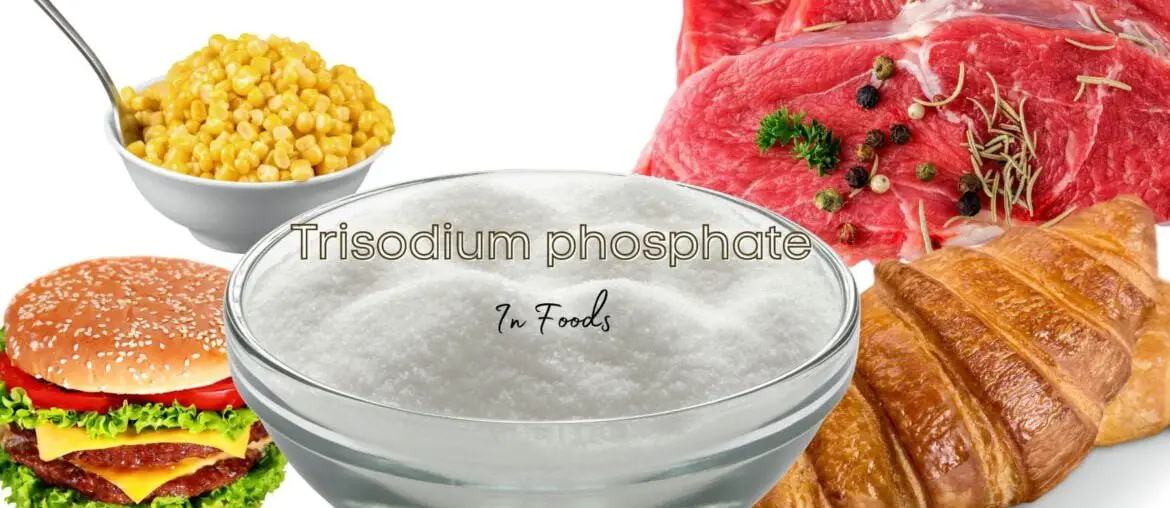Trisodium phosphate is an inorganic compound that is easily soluble in water and is regularly used as a food additive, detergent, lubricant, and other cleaning agent. Although its application in consumer products has been accepted and popular, its application in foods has been questioned. So, What is trisodium phosphate, what are its uses and what are the effects? Let’s have a closer look.
What is trisodium phosphate?
The chemical formula of trisodium phosphate is Na3PO4. It is an inorganic compound that is generally present in the form of white powder or crystal. It is a universal cleaner; because it can easily be mixed with warm water to effectively clean oil, rust, smoke, and other difficult debris. You can also find trisodium phosphate in various foods. It is an alkaline substance. Therefore, it is used to reduce the acidity in some foods.
Special features of trisodium phosphate
- Trisodium phosphate is a colourless white needle-like crystal or crystalline powder.
- The melting point of trisodium phosphate is 73.4 °C.
- Trisodium phosphate is soluble in water, and its aqueous solution is strongly alkaline.
- It is insoluble in ethanol and carbon disulfide.
- It is one of the vital product series of the phosphate industry.
- Due to its unique properties, Trisodium phosphate is widely used in new sectors such as agriculture, animal farming, petroleum, ceramics, detergent and other cleaning agents.
Nature of trisodium phosphate
It is tending to deliquescence. And it generates sodium dihydrogen phosphate and sodium bicarbonate. Almost completely decomposed into disodium hydrogen phosphate and sodium hydroxide in water.
- When trisodium phosphate is heated up to 55 ~ 65 ° C, it becomes decahydrate.
- When it’s heated up to 60 ~ 100 ° C, it becomes hexahydrate.
- When it’s heated above 100 ° C, it becomes become monohydrate.
- When it’s heated up to 212 ° C or more, it becomes anhydrous.
- The pH value of a 1% aqueous solution of trisodium phosphate is 11.5 ~ 12.1.
Trisodium phosphate in cereals

One of the main areas of contention in this debate is trisodium phosphate, such compounds included in breakfast cereal. It is often used as an ingredient in popular breakfast foods, which are often highly processed.
However, many big companies add trisodium phosphate to cereals to reduce their costs and acidity and change the grain’s colour. The FDA notes that this compound is generally safe when taken orally in small doses. It is recommended that the daily intake should not exceed 70 mg. The intake of most cereals is much lower than this total.
In other words, many consumers are concerned about the presence of this compound because it is also present in paint thinners and industrial bleaching products. Many organic and independent grain producers have stopped using this phosphorus compound as a preservative or additive in their products. If you are worried about its safety, you may want to avoid products that use this additive.
Trisodium phosphate in food
In addition to cereals, you’ll also find trisodium phosphate in the food in many processed and pre-packaged foods, such as the artificial, natural, and clinical aspects.
Most organic brands will not include phosphorus-derived inorganic compounds. Therefore, if you are careful about the products you buy, avoiding this in your diet should be easy.
However, trisodium phosphate is not only in food. It is also present in some species, toothpaste, mouthwash, baking soda, cosmetics, and certain drugs.
What is trisodium phosphate used for?
You will find tri-sodium phosphate all around.
- It is a popular cleaner.
- It is found in lubricants, detergents and degreasing agents.
- It is a food additive that can be found in various grains and other acidic foods.
- It is an inorganic form and is usually added to highly processed foods.
- It can also help certain foods increase or balance pH, retain moisture, protect flavour, and improve texture.
Applications of trisodium phosphate in the food industry
- Milk and dairy products, cream, and emulsified food products.
- Frozen drinks. (except edible ice).
- Canned vegetables.
- Cooked nuts and seeds (fried nuts and seeds only).
- Cocoa products.
- Chocolate and chocolate products.
- Confectionery.
- Wheat flour and Its products.
- Raw and wet pasta products (such as noodles, dumpling crusts, and braised clams).
- Batters. (such as batters for fish and poultry meat).
- Ready-to-eat cereals (including rolled oats or oatmeal).
- Prepared meat products.
- Cooked meat products.
- Frozen aquatic products.
- Thermally coagulated egg products. (such as egg yolk, or pine egg sausage).
- Beverage (Except packaged drinking water).
- Rice flour (including dumplings).
- Cereals and starch desserts (such as rice puddings, cassava puddings, and canned cereals only).
- Pre-made aquatic products (semi-finished products).
- Canned aquatic products
- Compound seasoning
- Other solid compound seasonings (only for convenient wet noodle seasoning packages)
- Oils or oil products (only fat-based powders)
- Processed cheese
- Canned cereals and other cereal products

Why add trisodium phosphate to food
Trisodium phosphate helps retain moisture during food storage and cooking. It also helps the cheese to maintain its shape and melt evenly.
In the case of cake mixes and other bread mixes, trisodium phosphate can be used as a leavening agent to keep food “fluffy.” In addition, it is sometimes used as a thickener for packaged foods (such as mashed potatoes) or to prevent the colour change of soda water.
Because of its specificity and antimicrobial impact, trisodium phosphate is included in toothpaste and mouthwash.
Because of its strong alkalinity, you will also find that trisodium phosphate is an ingredient that reduces the acidity of the food.
Similarly, like cereals, the amount of this phosphorus compound in most foods is also minimal and can be ignored. However, if your diet contains many processed foods, your total daily intake may exceed the FDA’s safety recommendations.
The side effects of trisodium phosphate
Trisodium phosphate is very dangerous when consumed in high quantities, as found in cleaning products.
It is associated with higher calcium deposition in the body, kidney stones, cancer, and even death. For those with kidney disease, overeating food containing such a phosphate compound is hazardous.
It will stimulate the stomach and gastric intestinal and reduce the amount of lactic acid in the muscles.
This compound is often found in dishwashing liquid and washing powder and was not found to be harmful to the environment until 2011. However, CDC compounds such as hazardous substances may cause abdominal pain, shock, or crash. The side effects are much more significant than those found in regular foods.
However, many people dispute its existence in any food. In addition, many ongoing studies are exploring the potential adverse effects of trisodium phosphate. But it is still legally permitted in the United States and elsewhere and is included in many popular consumer foods.
Check this out for various applications of trisodium phosphate
FAQ
Is TSP harmful to humans?
Trisodium phosphate is dangerous and poisonous if it is used wrong. It can irritate the eyes and skin and is severe for you if you swallow it. When you work with TSP, you need to be careful. When you work with or clean TSP, you should always wear eye protection and waterproof gloves.
Can I use vinegar instead of TSP?
Vinegar is an excellent way to clean without using chemicals like trisodium phosphate. It is an excellent degreaser and can be used to clean cabinets before painting. This process is not too complex and works well. You need to mix water and white vinegar in equal parts.
Is trisodium phosphate safe in food?
USDA classified trisodium phosphate in the safe zone in foods but needs to use in smaller quantities. Its daily intake should not exceed 70 mg.
Why is trisodium phosphate added to cereal?
Trisodium phosphate is added to cereal products to reduce their acidity value. Also, It can change the colour of the cereals.




![Interesting Facts About Kiwi Fruit [Bet You Don’t Know Many] Interesting facts about kiwi fruit](https://www.stethostalk.com/wp-content/uploads/2022/11/Interesting-facts-about-kiwi-fruit-270x180.webp)


